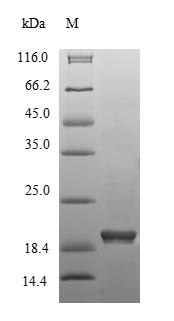Amino acids 700-860 constitute the expression domain of recombinant Mouse Hmgcr. This Hmgcr protein is expected to have a theoretical molecular weight of 20.4 kDa. This Hmgcr recombinant protein is manufactured in e.coli. The Hmgcr gene fragment has been modified by fusing the N-terminal 6xHis tag, providing convenience in detecting and purifying the recombinant Hmgcr protein during the following stages.
3-hydroxy-3-methylglutaryl-coenzyme A reductase (Hmgcr) in mice is a key enzyme in the mevalonate pathway, responsible for catalyzing the conversion of HMG-CoA to mevalonate. This process is a critical step in cholesterol biosynthesis and regulation. Hmgcr plays a central role in controlling cellular cholesterol levels, as it is subject to feedback regulation by cholesterol levels in the cell. Additionally, the mevalonate pathway is essential for the synthesis of various isoprenoids, including ubiquinone and dolichol, which have diverse cellular functions. Given its pivotal role in cholesterol homeostasis and broader cellular processes, Hmgcr is a target for pharmacological interventions, particularly in the development of statin drugs used to lower cholesterol levels and prevent cardiovascular diseases.




